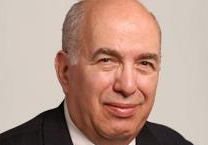The Fight for Top Talent in European Soccer
Since Michael Lewis published the book Moneyball in 2003, we have known that there’s a data-driven method to run professional sports teams. According to Lewis’s book, it was thanks to the emergence of sabermetrics that the Oakland Athletics (A’s) — with one of the lowest Major League Baseball team salaries — could compete with the wealthy teams, achieving a similar level of victories during the regular season as the New York Yankees (but not during the playoffs, where luck has a greater impact) and surviving financially.
However, it seems that the time-tested lessons of value investing that Billy Beane applied successfully with the Oakland A’s are impossible to implement in European soccer. Given that the key metric to achieve tournament success is goals scored (a player’s trait that very rarely remains hidden), big amounts in transfer fees are paid for players who are able to produce a great number of goals and assists per season. As a matter of fact, the 2010/2012 House of Commons Report on Football Governance found ample academic evidence that there is a clear correlation between team wages and points won.
There are several reasons why talent is expensive. First, there’s huge pressure on club directors from ordinary supporters — “emotional stakeholders” for whom the club is an intrinsic part of their lives and often of great social and cultural importance to their local community — to sign star players. Second, club executives (knowing the correlation between money spent and results) often overestimate their chances in the competition. They borrow heavily, hoping that prize money will eventually help them pay down the club’s debt. Third, there are some big clubs that are able to sustain large losses over time because they continually receive cash gifts from their rich owners, such as Chelsea and Manchester City in England and Juventus, Inter, and Milan in Italy.
The concerns about the heavy spending of some European clubs backed by rich owners led to the introduction in September 2009 of the Financial Fair Play (FFP) regulation by the Union of European Football Associations (UEFA, the European soccer governing body), hoping to level the playing field and to stop financially undisciplined clubs from gaining an unfair advantage over other clubs that are run on a more sustainable business model. The 2009/2010 UEFA’s club licensing report on top-flight clubs, released the last full financial year before the regulations had been approved, showed annual losses in the main leagues topping €1.6 billion. And the survey of 665 clubs showed that 56% were in the red at the end of the 2010 financial year.
The FFP regulation basically establishes some financial performance minimum that the clubs need to attain. The regulation establishes a breakeven requirement (losses can’t be greater than €5 million, unless they are funded with shareholder’s equity, in which case the losses can be up to €45 million per season until the end of the 2014/2015 season and €30 million per season until the end of the 2017/2018 season). Furthermore, the clubs can’t have overdue payables toward football clubs, and they can’t have overdue payables toward employees or social/tax authorities either, under threat of punishments that range from fines to bans of player transfers and even bans from competition.
We still don’t know if this initiative will attain its initial targets. Some of the punishments FFP intended to establish have been dropped because of concerns about the regulations’ legal grounds, and some of the teams backed by rich owners have found new ways to circumvent the breakeven requirement through operations with related parties. But there has been a slight improvement in the clubs’ financial behavior in the last two years, which increased the number of players from the youth development systems.
The Real Madrid Case
Despite the uproar raised for having been the buyer in the two most expensive signings in soccer’s history — those of Cristiano Ronaldo and Gareth Bale — making some see the club as a paradigm of unbridled spending, Real Madrid operates one of the few successful business models in European football. Since Florentino Pérez, a prominent businessman and owner of ACS (one of the biggest construction companies in the world), took the helm in 2000 (with a brief interregnum between 2006 and 2009), the financial performance figures of the club have improved spectacularly, reaching the top position in the Forbes list of most valuable soccer teams.
Revenue per season has grown from €118 million in 1999/2000 to €521 million. The club has also diversified its revenue mix, with ticket sales representing just 28% of total revenue (down from 40% back in 2000). At the same time, Real Madrid has reduced its debt-to-equity ratio from 5.4 in June 2000 to 0.3 in June 2013. It generates €135 million of free cash flow before capital expenditures, and after the big effort to overhaul the team’s roster in 2009, Real Madrid has adopted a prudent level of expenditure in new signings that has averaged €45 million in the last three seasons, devoting the rest of the cash flow to reduce debt and increase cash levels.
It goes without saying that with this financial performance, Real Madrid complies with FFP requirements and recommended levels of the wages to revenue ratio (47% reported versus 60% recommended). Apart from the increase in recurrent revenue, the club made a successful real estate operation selling its training grounds located in Madrid’s central business district (where four skyscrapers of offices are standing now) and moving to the outskirts of the city to a training facility 10 times as big as the old one.
One of the pillars of Real Madrid’s strategy is buying consecrated athletes whose image is easily salable for advertising purposes and making these players cede a sizable chunk of their endorsement revenues to the club. To see if it makes sense from a corporate point of view, let’s compare the two main signings of last summer’s transfer market, Gareth Bale and Neymar da Silva Santos Júnior. We assume that at the end of his contract, Bale will reach a similar level of endorsements as Cristiano Ronaldo, that sales of T-shirts with Bale’s name will be 50,000 units per year at a rate of €38 per unit for the club, and that 20% of future revenue growth (at a rate of 5% per year) will be attributable to his signing because of his influence in Asia and the commonwealth countries. Thus, the total cost for life span of the agreement would be 47.2 million euros.
Using similar assumptions for Neymar, who got to keep all his endorsements for himself and whose agreement is just for five years, we have what seems to be a humbler trade turns out to be 43.5% more expensive than Bale’s trade.
If we also take into account the kind of signings that the teams backed by rich owners have made this year involving lesser players, the transfer fee paid for Bale makes even more sense. In this context of transfer fee inflation, the only way to remain competitive is to make the revenues grow by signing players with global commercial appeal who help to strengthen the team’s value as a brand.
If you liked this post, don’t forget to subscribe to Inside Investing via Email or RSS.
Photo credit: flickr/Jan S0l0
Please note that the content of this site should not be construed as investment advice, nor do the opinions expressed necessarily reflect the views of CFA Institute.






Hey,
Assuming that all other data is correct, the transfer of Gareth Bale was 101 million Euro and his gross salary is 21 million Euro (10 net + 52% income taxes to be paid by the club) + variables.
That will change a little bit the final figures.